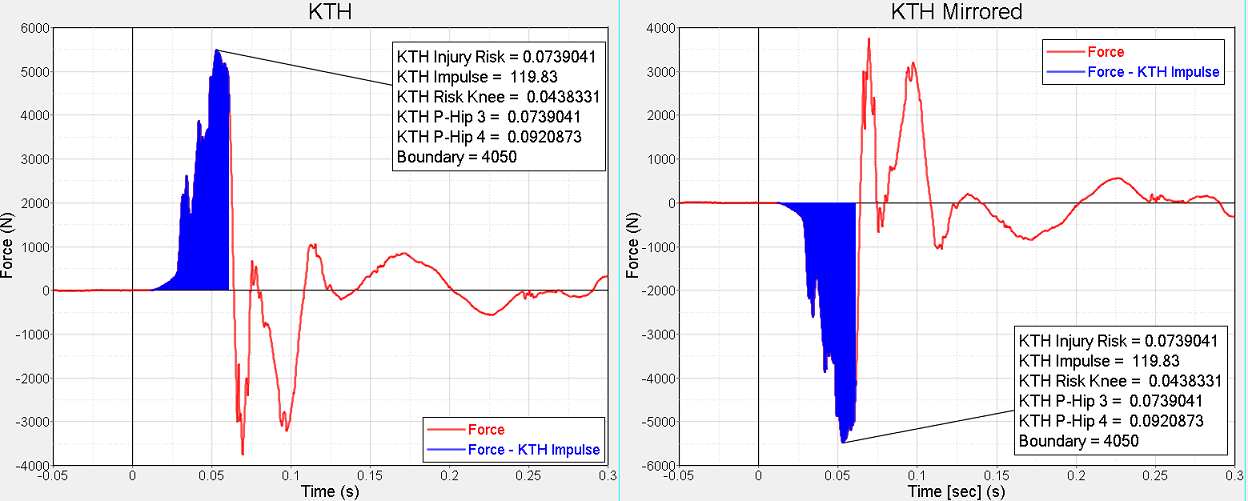kth
nee-thigh-hip injury function.
Syntax
kth(time_vector, force_vector, dummy_type, return_value, debug)
Arguments
- vector1
- The independent time vector in seconds (mandatory).
- vector2
- The dependent force vector in Newtons (mandatory).
- dummy_type
- The function accepts either strings or integers as the dummy type:
- 1 or "H3_M_50" = HIII-M50 (Default)
- 2 or "H3_F_5" = HIII-F5
Note: Double quotes must be used around strings. - return_value
- 0 = KTH (Default)
- debug
- 0 = debug off (Default)
Example
KTH Injury Risk = {kth(c1.x,c1.y,1,0)}
KTH Impulse = {kth(c1.x,c1.y,1,1)}
KTH Risk Knee = {kth(c1.x,c1.y,1,4)}
KTH P-Hip 3 = {kth(c1.x,c1.y,1,5)}
KTH P-Hip 4 = {kth(c1.x,c1.y,1,6)}
Boundary = {kth(c1.x,c1.y,1,8)}X Vector: kth(c1.x,c1.y,1,2)
Vector: kth(c1.x,c1.y,1,3)Comments


Figure 1.